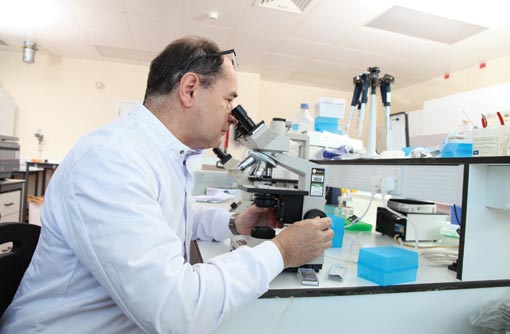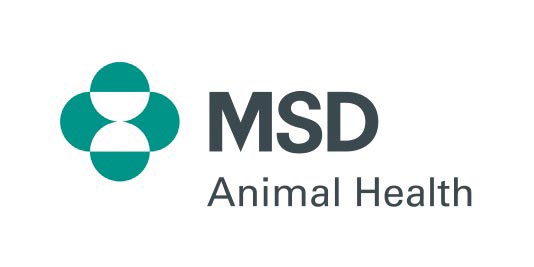Identification and control of IB in poultry

Strain identification and vaccine selection are crucial when it comes to managing infectious bronchitis. In the second of our sponsored series, two leading experts look at new and emerging technologies.
IB is a complex infectious disease. To what extent is establishing the specific variant virus key to developing a protection strategy? How would you approach diagnosing the strain?
RC: Without confirmation of the specific strain, it is very difficult to decide on the most appropriate vaccination strategy. But it is not possible to identify or distinguish specific variants of IB through basic visual assessment or traditional ELISA testing, which only detects a general antibody response.
The technology we have developed at X-OvO combines polymerase chain reaction (PCR) testing and novel RNA sequencing to give an extremely accurate identification of the strain.
There is a range of highly effective IB vaccines available in the UK. If the identified strain can be matched with the most appropriate vaccine, there has to be a greater confidence that the protection strategy will be economic and successful.
BF: When I am faced with a suspected IB challenge in a flock, along with a series of blood tests I will also take a selection of cloacal swabs to send off to help identify the specific strain involved.
The blood results are back within a few days and usually confirm my suspicion, which allows us to embark on supporting the challenged flock. Due to the complexities of the PCR testing, results can take several weeks to come back. The PCR test is also very specific to IB, so we still need to take the bloods to rule out (or in) other disease challenges.
A lot of the time we may find the IB is complicated with a challenge of avian rhinotracheitis (ART) or on some occasions mycoplasma. If a variant IB is identified by the PCR test, this can help us to decide on the best vaccination strategy – and whether to alter the vaccines in rear for the next birds.
In my experience, this has worked extremely well and has helped to turn around some underperforming flocks simply by altering the vaccine and application timing.
Meet the experts
 Barrie Fleming is a Glasgow University Veterinary School graduate, who jumped into poultry when he joined Elanco Animal Health in 2002. In 2009, he joined the St David’s Poultry Team. Mr Fleming has gained extensive experience in poultry production systems across the world and developed a keen interest in intestinal health and respiratory disease challenges. He is based in Penrith in the Lake District.
Barrie Fleming is a Glasgow University Veterinary School graduate, who jumped into poultry when he joined Elanco Animal Health in 2002. In 2009, he joined the St David’s Poultry Team. Mr Fleming has gained extensive experience in poultry production systems across the world and developed a keen interest in intestinal health and respiratory disease challenges. He is based in Penrith in the Lake District.
 Richard Currie is a veterinary graduate of Edinburgh University with a PhD in cell and molecular biology. He began his poultry career with Aviagen as the vet in charge of the pedigree programme. Mr Currie moved to Fort Dodge Animal Health as director of poultry, prior to co-founding x-OvO in 2007. The company is a specialist diagnostics organisation, marketing a complete line of serological tests, plus diagnostic antigens and sera.
Richard Currie is a veterinary graduate of Edinburgh University with a PhD in cell and molecular biology. He began his poultry career with Aviagen as the vet in charge of the pedigree programme. Mr Currie moved to Fort Dodge Animal Health as director of poultry, prior to co-founding x-OvO in 2007. The company is a specialist diagnostics organisation, marketing a complete line of serological tests, plus diagnostic antigens and sera.
Can you summarise how the technology works to provide an accurate strain identification?
RC: The poultry vet will have identified, through observation and reporting, that the individual flock may be undergoing a level of IB challenge.
Swabs are taken from 10 birds per airspace and sent to our laboratories. Through using our advanced techniques, we are then able to map and match the profile with a high degree of accuracy against the commercial vaccine strain.
In addition, our experience enables us to understand the behavior of specific strains and how they will react to individual or combination vaccines. When the testing is complete, the information is then returned to MSD Animal Health and the producer vet so that the most effective vaccination strategy can be determined.
Using the results from the PCR tests, how can the producer and their vet plan an appropriate vaccination strategy?
BF: Identifying specific strains of IB allows us to understand what the birds are being challenged with. By using this information, we can then select a vaccine (or combination of vaccines), that should provide appropriate and specific cover to those variants on farm.
Using the PCR testing, I have sometimes altered the strain of vaccine used and timing of application that has resulted in significant improvements in flock health and production. There are many instances when we have been struggling with flocks, particularly multi-age sites that have historically underperformed. By carrying out testing across the site, we have identified multiple strains of IB that have appeared to be recirculating within the flock.
With this data, we have been able to decide on bespoke and very effective vaccination strategies that have resulted in a return to good performance levels.
By testing flocks on a site, we can monitor for vaccine virus or for the continued presence of field challenge. This way we can change and adapt if a different strain of IB should appear that is not covered with the current vaccines in use.
Looking broadly at the results from submissions across the UK, what are your observations on the instances of the more common strains?
RC: 4/91 continues to be the most prevalent, accounting for more than 62% of total typeable samples analysed, followed by QX, H120 and D274.
The field 4/91 strain is particularly variable in profile. As a result, poultry vets working with their clients are establishing combination vaccination strategies by introducing a further vaccine strain, such as Ma5, to provide broader cross-protection when the diversity of the field virus merits it. This approach of introducing a further vaccine serotype, developed and marketed as Protectotype, has proved highly effective, both in the UK and abroad.
BF: The main strains that I am generally dealing with are 4/91 variants. The next most troublesome would be QX, which has caused significant problems where birds have been exposed to it.
A combination vaccine strategy is commonly employed to help control potential challenges – this is partly to protect against the known strains on site, including QX, but also against potential future challenges of unknown strains.
With layers, the most significant findings would be a drop in egg production and feed/water intake. In the worst-affected flocks, a proportion of the birds will moult. This may also be associated with increased mortality as a result of egg peritonitis.
With broilers, I will generally see an increase in mortality with wet litter. On post mortem examination it would be relatively common to see changes to the kidneys and cysts forming within the abdomen. Specific strains often occur in regional clusters – this makes it important for all producers to talk to each other and share this information.
The industry is obviously concerned with the apparent increase in exotic strains. How do you view this threat?
RC: In recent years the industry has rightly been concerned about the emergence of new strains, some emanating from overseas with the potential to be highly damaging.
Even within the established strains currently recognised in the UK we see changes in virus behavior. The pharmaceutical companies have done well to provide suitable vaccines to match the strains.
Some of the vaccine virus strains we see, such as 4/91, replicate accurately and persistently throughout the broiler lifecycle, thus effectively colonising the farm with vaccine strain virus.
Using the Protectotype approach enables us to protect against divergent field strains with greater confidence.
Current observations on other field strains, such as QX, indicate greater variability between countries, meaning that in some cases they may be more distant from vaccine strains and hence much harder to protect against.
BF: The industry is right to be concerned as IB is, and will remain, a threat due to its ability to adapt and develop into new strains. With that grim comment, I have found vaccine combinations to be very effective when they are used correctly.
It is also important to focus on strict biosecurity to control all disease challenges. No vaccination program by itself is enough to control or prevent disease – so we need to ensure that we minimise or prevent a challenge to the birds.
With the growing number of IB variants indentified on UK farms, how can this new technology benefit the industry as a whole?
BF: PCR technology takes the guesswork out of what may be challenging the birds and is allowing us to choose a vaccine strain that is more likely to provide appropriate protection. It is also allowing us to map out clusters of variants to see where the strains are now and where they may move to – allowing us to prepare.
The PCR test is an invaluable diagnostic tool; it helps us to gain a greater level of understanding on what is happening within a flock, and industry, with respect to IB challenges.
But it must be stressed that it is not the “be all and end all”, as it has to be used in conjunction with the investigational skills of your veterinary team, as well as with other available tests and knowledge of the flock and site.
Working to promote healthy production
The MSD Animal Health Poultry team works with UK vets and their clients to develop programmes and strategies to promote healthy production using the company’s vaccines and poultry health products.
The following MSD IB vaccines are provided under veterinary direction:
- Nobilis IB 4-91: live variant IB strain vaccine for in water or spray vaccination.
- Nobilis Ma5: Massachusetts (classical) IB strain vaccine for in water or spray vaccination.
- Nobilis Ma5+clone 30: live Massachusetts (classical) IB strain combined with Newcastle Disease virus for in water or spray vaccination.
- A range of inactivated Noblis vaccines containing IB strains are also available.
 To assist producers and their vets, MSD Animal Health works in collaboration with X-OvO Diagnostic Solutions to provide IB strain identification and interpretation.
To assist producers and their vets, MSD Animal Health works in collaboration with X-OvO Diagnostic Solutions to provide IB strain identification and interpretation.
